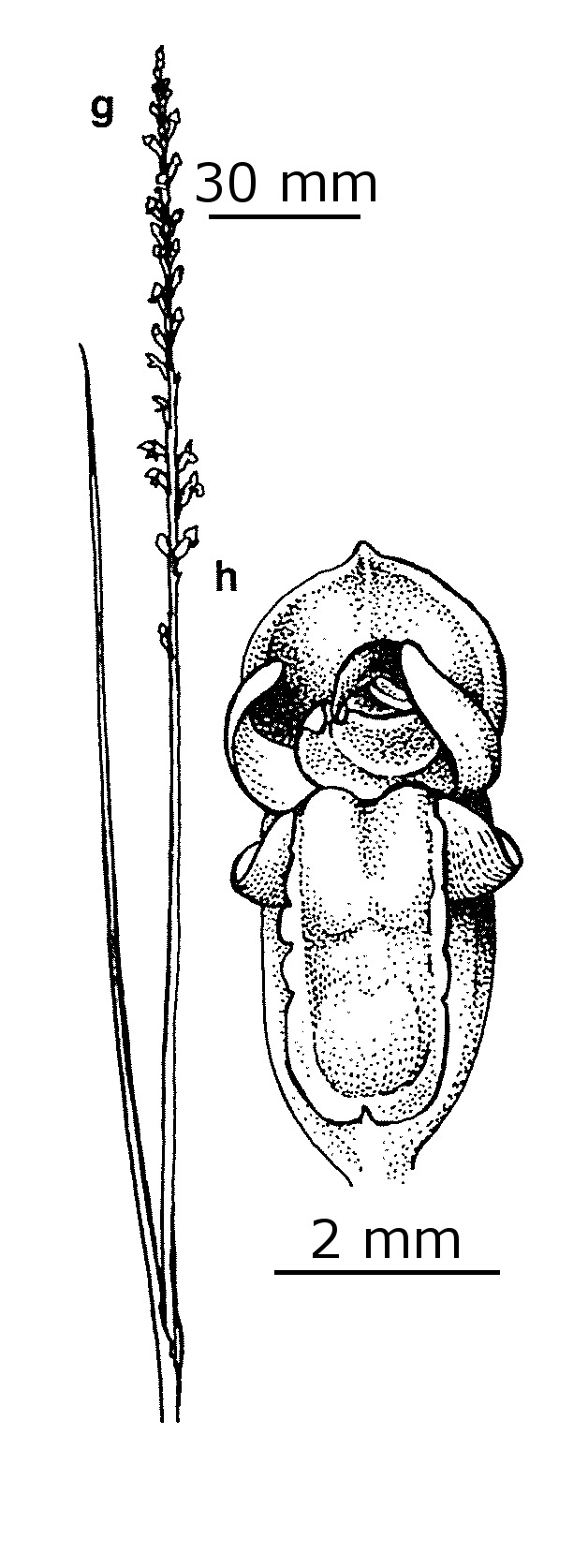Microtis rara
R.Br.Flowering stem 20–50 cm tall, slender. Leaf 20–50 cm long, tapering gradually to long slender apex; sheath opening well below inflorescence. Flowers 10–50, green, fragrant, erect, in loose spike-like raceme 3–16 cm long; ovary almost ellipsoid, 2–3 mm long, on short pedicel, standing out from stem; dorsal sepal ovate, c. 3 mm long, almost erect, narrowly hooded, apex pointed and slightly recurved; lateral sepals linear-oblong, shorter than dorsal sepal, spreading, recurved to tightly revolute; petals lanceolate and sickle-shaped, shorter than dorsal sepal, basal margins overlapped by dorsal sepal. Labellum reflexed against ovary, more or less oblong, 3–5 mm long, usually constricted about the middle; margins minutely notched, often thickened; apex truncate or notched; lamina with 2 large basal calli and 1 smaller apical one. Column with relatively large auricles.
GleP, Brid, VVP, VRiv, GipP, OtP, WaP, Gold, CVU, GGr, DunT, NIS, EGL, EGU, WPro, HSF, HNF, MonT, HFE, VAlp. All States except NT. Found in swamps or wet areas, often deeply shaded. Flowers Nov.-Jan. Widespread but generally uncommon in open forest and scrub and most abundant after bushfires.
Apart from those features mentioned in the key, M. rara differs from M. unifolia in having narrower ovary, longer more slender pedicels, a broader, more shallowly hooded dorsal sepal and a narrower labellum often with thickened margins.
Although Clements (1989) and Jones (2006) retain M. oblonga as a species distinct from M. rara, the 2 taxa are here treated as synonymous.
Entwisle, T.J.; Bates, R.J. (1994). Microtis. In: Walsh, N.G.; Entwisle, T.J., Flora of Victoria Vol. 2, Ferns and Allied Plants, Conifers and Monocotyledons, pp. 865–868. Inkata Press, Melbourne.
 Spinning
Spinning


